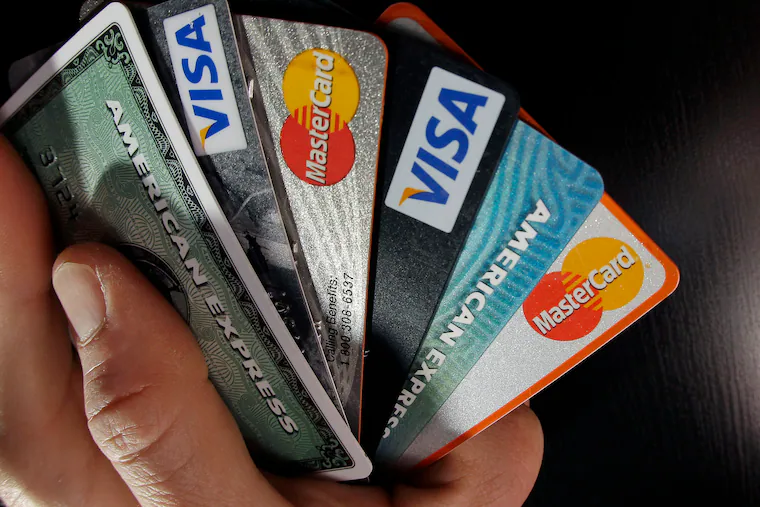
The Federal Reserve announced that it will cut interest rates by a quarter point for the first time this year — but that probably won’t mean the mortgage rate or car loan you’ve been eyeing will suddenly drop.
Fed rate cuts are one piece of the puzzle in how banks determine loan rates and could contribute to a trend of interest rates slowly decreasing over time.
Here’s what the long-anticipated rate cut means for your mortgage, car loan, savings account, and more — and what happened when the Fed cut interest rates in the past.
The Fed’s action sets the federal funds rate, or the standard rate for how banks borrow money from each other. That means banks can consider charging customers a lower interest rate and still make a profit, because they are paying less to borrow the money in the first place.
But that doesn’t directly change what banks charge customers to borrow money for, say, small-business loans or car loans. The Fed’s rates are short-term, and while it influences longer-term loan rates, it does not control them.
“We’re not going to see mortgage rates, car loans, savings rates, all at once have a step-change down by exactly a quarter-percent,” said Bankrate financial analyst Stephen Kates.
The amount of movement depends on the type of loan you’re considering.
The Fed’s rate cut might be anticlimactic for Americans flirting with the idea of homeownership. The 30-year mortgage has fallen slightly to 6.35% as of last week, according to mortgage giant Freddie Mac. That might not change much in coming weeks.
Fixed-term mortgage rates are more influenced by Treasury bond yields, which are determined by investors’ views of the economy as a whole.
Those bond yields can even run in the opposite direction of Fed rate changes. When the Fed cut rates late last year, Treasury yields — and mortgage rates — did not follow. Instead they rose as investors worried about potential upcoming inflation.
If a bank is going to lend you money for 30 years, it has to anticipate how to get that money back at a market interest rate that adapts to the next 30 years of economic ups and downs, said Justin Wolfers, a professor of public policy and economics at the University of Michigan. And that’s harder to predict.
Americans who already locked into a fixed-rate mortgage — which is by far the most common type of mortgage in the United States — won’t see a change at all. That mortgage rate stays the same over the 30- or 15-year lifetime of the loan, unless they refinance.
Fixed-rate mortgage rates have already dropped slightly this year, as the labor market weakens and demand in the housing market remains somewhat sluggish.
Fed rate changes often have a more direct effect on shorter-term loans, or loans with variable rates, such as adjustable-rate mortgages. Those rates can move up and down as the Fed’s rate does.
Car loans reflect a type of borrowing that may be partially but not directly influenced by the Fed’s rate. Banks also look at what the Fed says about what could be coming ahead to set rates.
Auto rates — which are hovering around 7.6% on average — are affected by many factors, including bond yields, the borrower’s credit score, and the number of recent delinquencies in a bank’s portfolio, said Erin Keating, senior industry analyst at Cox Automotive.
“It’s like a witch’s brew,” she said. “It’s a little bit of this, a little bit of that. They’re looking at a variety of factors.”
Auto loan interest rates tend to be more responsive to the Fed than mortgage rates, with shorter-term loans matching the Fed’s rate cuts more closely. But car loans are also sensitive to the market dynamics of the auto industry, so rates often stay high when many people are applying.
Any relief in auto loan rates would be welcome for buyers. Keating has seen consumers move toward car loan terms spread over longer periods — 60, 72, or even 84 months.
“We’re definitely seeing that customers are needing that help to get that monthly payment down to a reasonable dollar figure,” she said.
Fed rate changes have a stronger influence on short-term interest rates, like those on credit cards or savings accounts. Interest rates on credit card debt may fall slightly in relation to the Fed’s rate cut. That could provide some relief to consumers who carry a balance from one month to the next, which is nearly half of all American credit card holders, according to a 2024 Fed survey.
However, it’s possible financial firms already have accounted for changes for such short-term interest rates, as interest rate changes often happen once the market is convinced that a Fed rate change is coming.
On the other hand, it also could mean that the interest rate you’re making from holding funds in a high-yield savings account or a short-term CD also could fall, meaning your annual return might be a bit lower.
Loans to businesses are influenced by several economic factors, and the Fed’s rate is one of them. These loan rates are also written to reflect the risk of the industry, the business plan, and the creditworthiness of the borrower, among other things.
As interest rates get less expensive, it gradually becomes cheaper for businesses to take out loans. These loans are crucial for broader economic growth, because they make it possible for companies to expand or build new projects, which creates jobs.
However, the weakening labor market is also weighing on lenders’ minds as they consider setting rates for longer-term loans. As the risk of a recession increases, there’s an increased chance the borrower won’t be able to pay the money back.
One unexpected factor the market may be considering this year, is the independence of the Fed itself. The Trump administration has attacked the Fed and its members and threatened to take more control over the independent agency.
Such increased uncertainty can keep borrowing costs higher, especially for long-term loans. If the Fed’s independence erodes enough that markets lose confidence in the central bank’s ability to control inflation, investors could demand higher yields to compensate for that risk.



